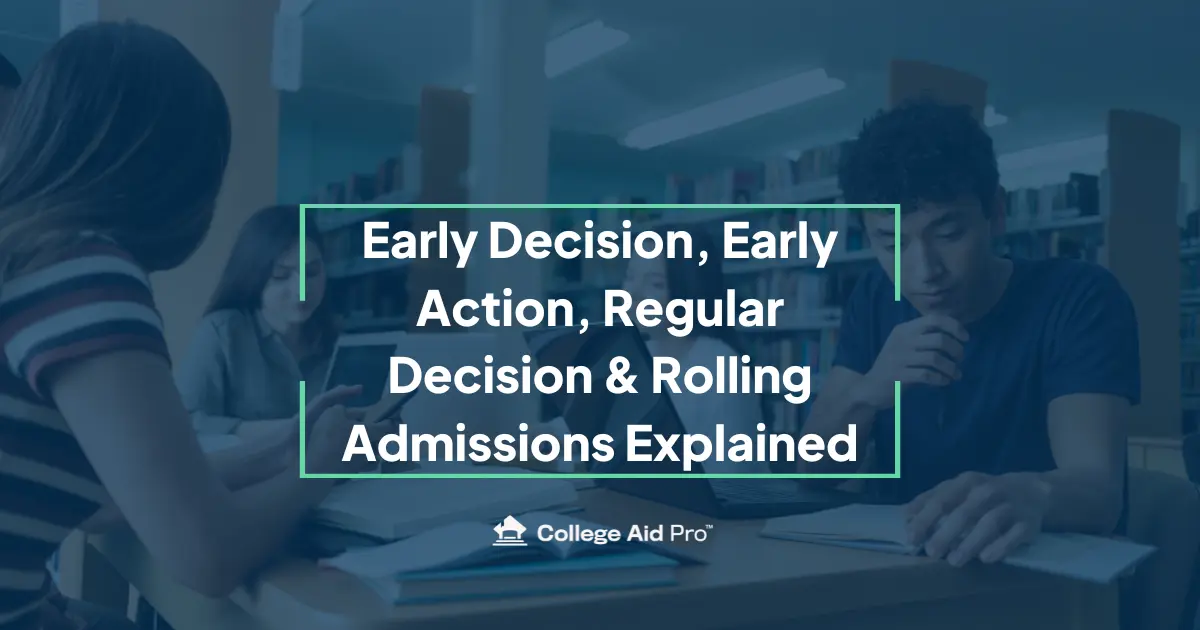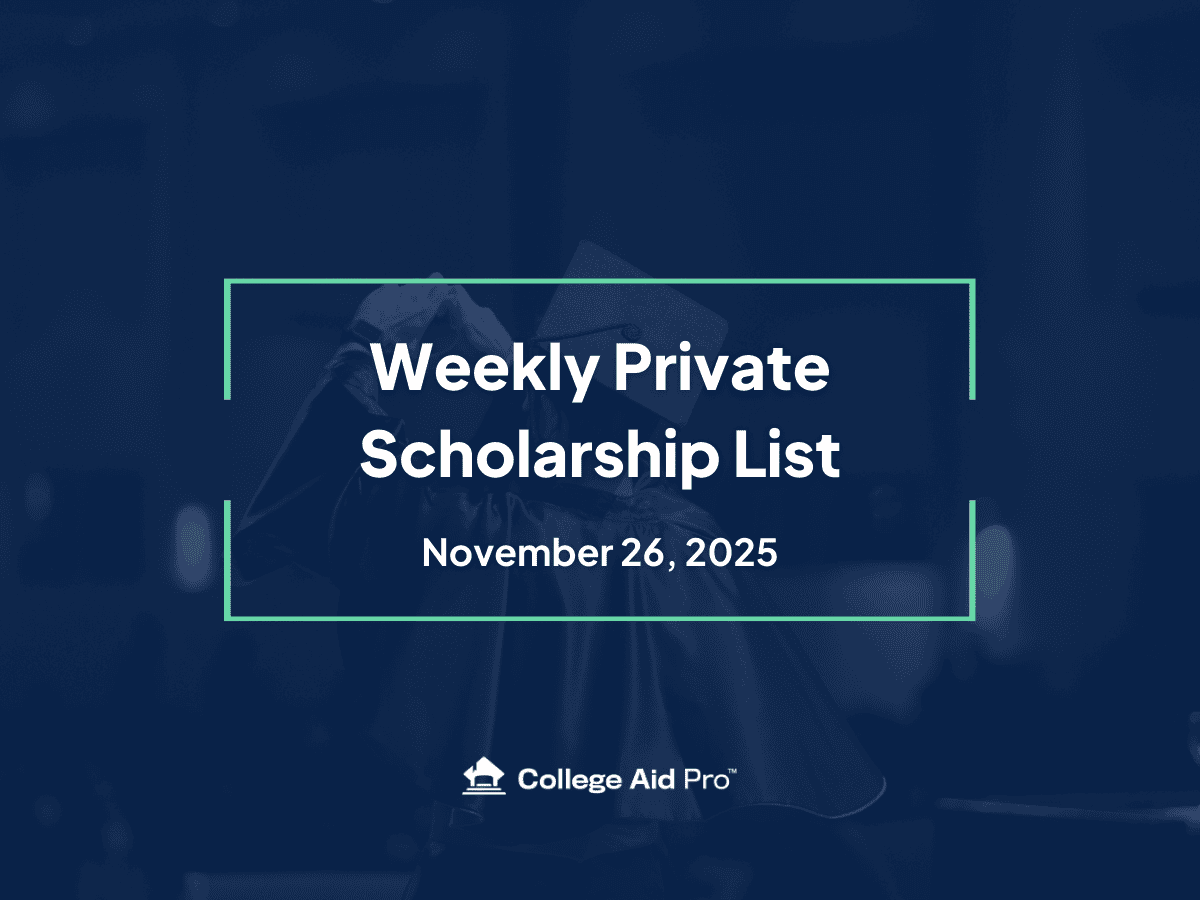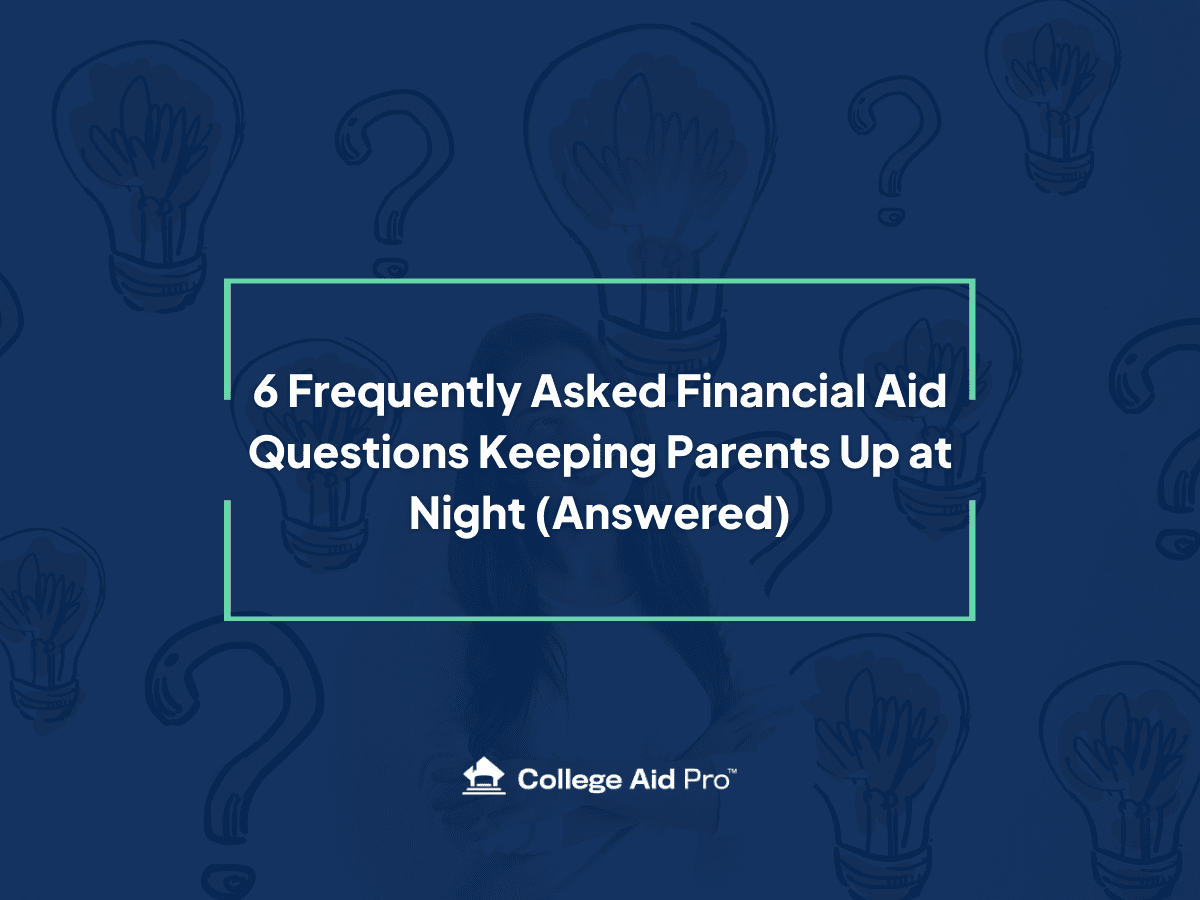College Admissions Made Simple: Early Decision, Early Action, Regular & Rolling Admissions Explained
The college admissions process is complex, with a maze of deadlines, terminology, and financial decisions to navigate. In a recent episode of College!, host Peg Keough and CAP Admissions Expert, Joe Korfmacher, break it all down, explaining the pros and cons of Early Decision (ED), Early Action (EA), Regular Decision, and Rolling Admissions—and how each impacts both admissions chances and financial aid.
This guide distills their conversation into a clear roadmap for parents and students, highlighting key strategies and real-world stories to help you make confident choices.
What Is Early Decision?
Early Decision (ED) is one of the most talked-about application options—and one of the most misunderstood.
Peg Keough: “That’s when you’re applying and committing that you are going to go to that school. You actually sign a contract saying if you’re admitted, you’re coming.”
When a student applies ED, they agree that if accepted, they will enroll at that college and withdraw all other applications. Both the student and their high school counselor sign an agreement confirming this commitment.
Pros of Early Decision:
- Higher acceptance rates: Many colleges admit a larger percentage of their class from the ED pool.
- Less stress later: Students know where they’re going months before regular decision notifications.
Cons of Early Decision:
- Financial risk: Families are committing to attend without the ability to compare financial aid offers.
- Loss of leverage: As Joe Korfmacher explains, “Early Decision is a bigger benefit for colleges than to students because it helps them secure their yield rate.”
Early Decision 1 vs. Early Decision 2
Some colleges offer ED1 (usually due November 1) and ED2 (often due in January). Both are binding.
- ED1 is for students who know their top-choice school early in the fall.
- ED2 allows more time for students to finalize test scores, first-quarter grades, or reconsider their top choice if their ED1 attempt doesn’t work out.
Real Stories: When Early Decision Works and When It Doesn’t
Joe shared two powerful examples from his 15+ years in admissions counseling:
Katie – ED Success Story
Katie dreamed of Columbia University, had stellar academics, and her family knew they could afford it thanks to Columbia’s generous need-based aid. She applied ED, was accepted, and received an aid package close to what she expected. It was a perfect match academically, personally, and financially.
Mike – ED Pitfall
Mike, on the other hand, loved Tulane but came from a family that wouldn’t qualify for much need-based aid. Tulane is known for offering strong merit scholarships—but not for ED admits, who are already committed. Mike applied ED, got in, but received little to no merit aid, leaving his family facing high out-of-pocket costs.
Key takeaway: If your student is a strong candidate for merit scholarships, ED might reduce your negotiating power.
What Is Early Action?
Early Action (EA) is often the best-kept secret in college admissions.
Unlike ED, Early Action is non-binding. Students apply early (usually by November 1 – December 1) but are not required to commit if accepted.
Peg Keough: “With my own kids, I said, you are getting everything in by those early deadlines. It’s a great way to get results sooner and be considered for automatic merit scholarships.”
Benefits of Early Action:
- Earlier results: Students often hear back by December or January.
- Financial flexibility: You can compare aid offers before committing.
- Scholarship opportunities: Many colleges require EA deadlines to be eligible for automatic merit awards.
Who Should Apply Early Action?
- Students with solid junior year grades who don’t need to boost their GPA in senior year.
- Students who want to reduce stress by securing early acceptances.
Rolling Admissions
Rolling Admissions means colleges review applications as they come in rather than waiting for one deadline.
- Students may hear back within weeks, sometimes before senior year even starts.
- Applying early increases acceptance chances at some rolling schools as spots fill up.
- Examples include Arizona State University and Penn State.
Regular Decision
Regular Decision deadlines (usually January 1 to February 15) are the most common and give students more time to polish their applications, take standardized tests, and strengthen their academic record with first-semester senior year grades.
However, at many selective schools, Regular Decision admissions rates are lower than ED or EA.
Admissions Stats That Might Surprise You
Joe shared eye-opening numbers:
- Selective schools (accepting <25% of applicants): Early Decision admit rates average 17.5% compared to 7.5% in Regular Decision.
- Liberal Arts Colleges: ED admit rates often double, sometimes even triple, Regular Decision rates.
- Examples:
- American University: 85% ED vs 45% RD
- Bucknell University: 73% ED vs 31% RD
- Bates College: 46% ED vs 10% RD
Financial Aid & Admissions Strategy
Peg Keough’s advice: Always run the college’s Net Price Calculator before applying ED and consider talking directly with financial aid offices.
- Need-based aid: Some schools guarantee to meet 100% of demonstrated need (e.g., Ivy League schools).
- Merit aid: Typically awarded by admissions offices to attract strong students—but often not to ED admits.
Appeals are possible: Peg shared how one family successfully appealed an under-award and received an extra $10,000 per year. However, those opportunities are limited when applying ED because you’ve already committed.
Key Takeaways for Parents & Students
- Early Decision can boost admission chances but removes financial flexibility.
- Early Action is low risk, early reward—apply EA whenever possible.
- Rolling Admissions can secure acceptances quickly and reduce stress.
- Regular Decision is best if you need time to strengthen your application or improve test scores.
- Do your homework: Compare costs, understand financial aid, and know each school’s policies before applying.
Final Thoughts
As Joe reminds us:
“This is supposed to be the fun part—building your college list and deciding where to apply. You’re in the driver’s seat right now. Do the research, have honest conversations as a family, and enjoy this journey.”
College admissions is a once-in-a-lifetime experience for most families. Whether you choose Early Decision, Early Action, Regular Decision, or Rolling Admissions, understanding how each option impacts admissions and financial aid can save stress—and potentially thousands of dollars.
Want the full conversation? Listen to the full episode of College! featuring Peg Keough and Joe Korfmacher wherever you get your podcasts.



